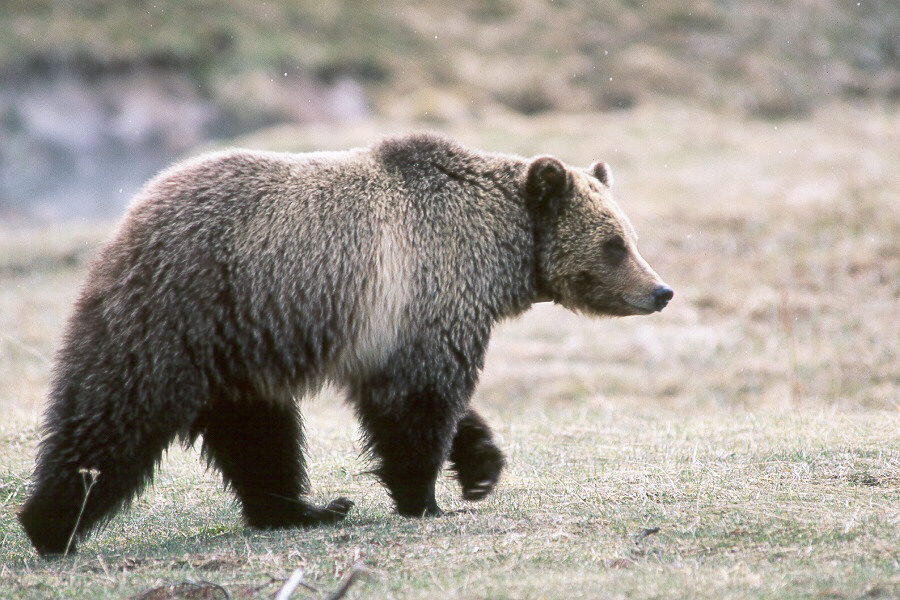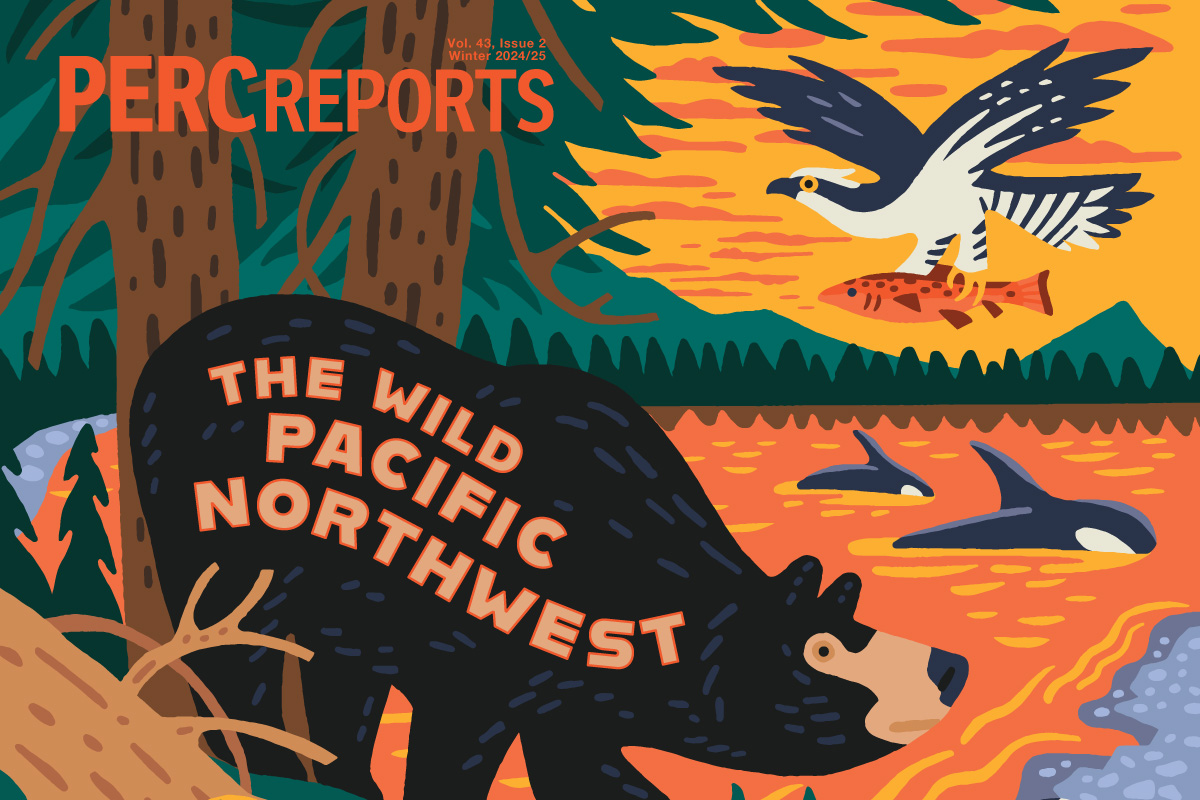
BOZEMAN, MT—The Property and Environment Research Center (PERC) released a new report today—From Range to Ranch: Assessing the Bureau of Land Management’s Wild Horse and Burro Adoption Incentive Program—authored by Tate Watkins, Managing Editor and Research Fellow at PERC, and Katie Flavin, 2024 Impact Fellow at PERC, revealing the underreported crisis on America’s Western public lands of wild horse and burro overpopulation and analyzing the effectiveness of the Bureau of Land Management (BLM)’s wild horse adoption incentive program established in 2019.
In an effort to reduce the pressures wild horse overpopulation places on public land ecosystems, the BLM, inspired by PERC research, created up to a $1,000 per wild horse or burro financial incentive for adoption to minimize the physical cost of horse removal on rangelands and financial burden on taxpayers. The initiative has seen tremendous success in the five years since its inception with massive benefits for both wild horse population control and taxpayer wallets. Some key report findings and program achievements include:
- Growing populations of wild horses and burros threaten rangeland ecosystems across the western United States, with the current total population of 73,000 animals on public lands nearly three times the national estimated sustainable threshold of 27,000.
- The Bureau of Land Management currently holds and cares for 62,000 wild horses in off-range pastures and facilities, costing taxpayers a staggering total of $108.5 million in 2023.
- Average annual adoptions of wild horses and burros have more than doubled since the inception of the BLM’s 2019 $1,000 adoption incentive when compared to the previous five-year period. The lifetime cost savings of adopting a wild horse into private care is estimated to fall between $22,500 and $29,000.
- Since the initiative’s implementation, the BLM and taxpayers have saved approximately $66 million in avoided holding costs. With over 15,000 incentive adoptions to date, approximately $400 million will be saved over the lifetime of those wild horses and burros.
- The program is currently on track to place over 30,000 animals in private homes during its first decade, saving more than $800 million in lifetime costs.
While PERC has found the adoption incentive program to be an effective tool to relieve stress on public rangelands and promote long-term fiscal sustainability, the report concludes with the following recommendations:
- Increase the adoption incentive payment by experimenting with alternative frameworks. Raising the financial incentive above its current $1,000 threshold, or establishing a “frequent adopter” program where individuals who adopt consistently can be eligible for bonuses by demonstrating responsible animal retention, could prove beneficial to increase the quantity of adoptions.
- Harness private partnerships to place even more wild horses and burros with adopters in the Eastern U.S. BLM is lacking short-term holding facilities for horses in this area, and the agency estimates that demand exists to more than quadruple the number of eastern adoptions over the next five years, totaling 13,000 animals. The agency should aim to harness enthusiasm and funding from private partners to mitigate transport and logistics costs and grow adoptions.
- Leverage the adoption incentive’s cost savings to support other strategies that can help alleviate the wild horse and burro crisis. As the BLM looks to the future, complementary options to help mitigate the wild horse crisis could include investing in immunocontraception efforts, expanding training programs, or innovating new ways to place more animals into good homes.
“In the past five years, the BLM’s wild horse adoption program has proven to be a massive success – cementing an actionable solution to wild horse overpopulation that prioritizes public land conservation, ensures the health and safety of animals, and dramatically reduces taxpayer costs” notes Brian Yablonski, CEO of PERC. “This program demonstrates the powerful role incentives can play in creating effective conservation outcomes. It’s inspiring to see the BLM embrace a creative solution that can serve as a model for other complex challenges.”
What They’re Saying
“Since the inception of the Adoption Incentive Program, thousands of Americans have chosen to open their homes to a new wild horse or burro companion. This successful program not only saves taxpayer dollars, it helps foster healthier rangelands and a brighter future for the wild herds and other wildlife that roam public lands.”
Brian Hires, Press Secretary and Spokesperson, Bureau of Land Management
“Aggressive expansion of the adoption incentive program and increased flexibilities are needed for BLM to address the scale of devastation these herds are wreaking on habitats. We thank PERC for highlighting the importance of the program, its recent success, and the need to utilize all available management tools to bring populations to appropriate management levels.”
Ron Regan, Executive Director of the Association of Fish and Wildlife Agencies
“The report from PERC demonstrates the incredibly high cost of holding unadopted federally designated wild horses off-range and the small cost versus large benefits to the American taxpayers resulting from BLM’s adoption incentive program.”
Bob Lanka, President, The Wildlife Society
“According to professional wildlife managers, wild horses and burros exceed Appropriate Management Levels in 86 percent of the herds that exist across the West and are triple what is sustainable on the public rangelands. Their impact on native wildlife is devastating, particularly in times of drought, when they outcompete and exclude wildlife from limited water sources and overgraze vegetation leading to erosion and diminished food stocks. Gathering horses and holding them off range is the only tool Congress currently allows for addressing this ecological problem, but the expense of pasturing and feeding horses indefinitely could bankrupt the federal agencies tasked with their management. Diverting these animals to private homes is the fiscally and socially responsible thing to do, and incentives for adoption that cost a fraction of what holding costs do is a prudent policy direction for the federal government to pursue.”
Blake Henning, Chief Conservation Officer, Rocky Mountain Elk Foundation



